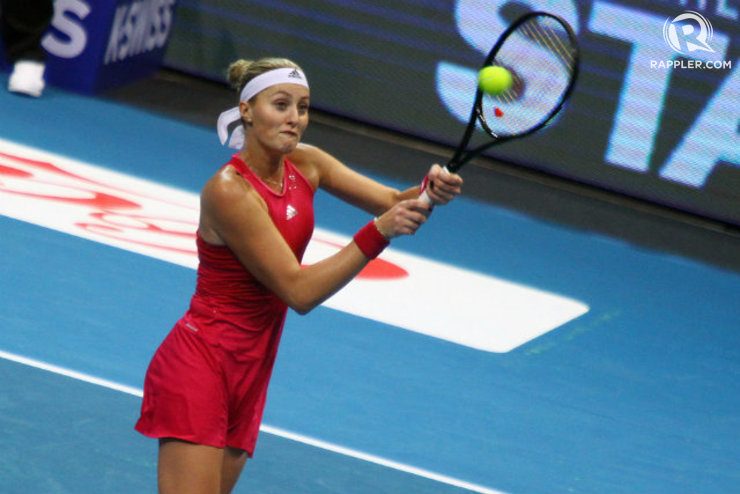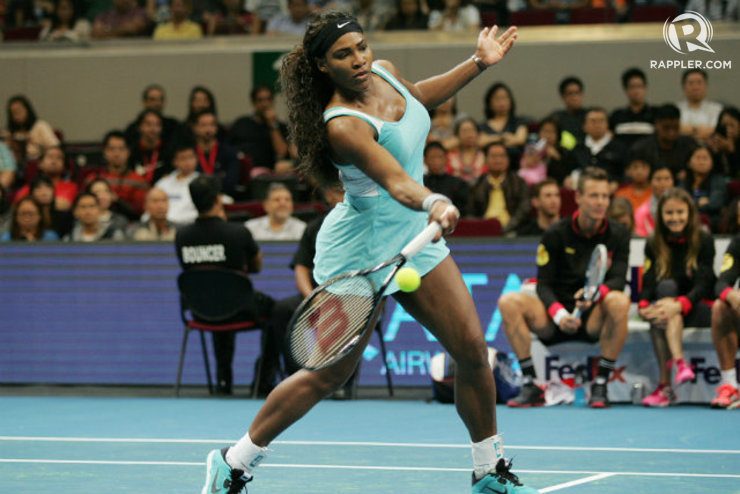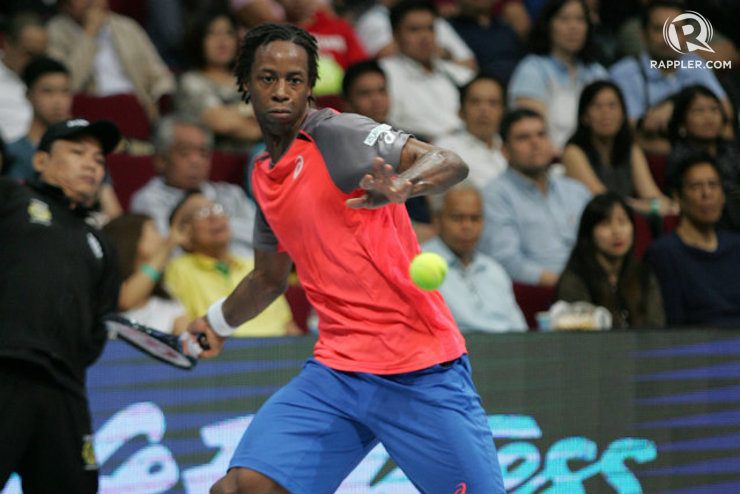SUMMARY
This is AI generated summarization, which may have errors. For context, always refer to the full article.

MANILA, Philippines – Watching this NBA season’s Houston Rockets has been like watching my Sony Playstation console come to life.
This season’s Rockets, led by the incredible offensive talent and defensive liability that is James Harden, his sidekick Dwight Howard, and the rest of their crew, play close to how NBA2K gamers usually play for the most part: by chucking up a lot of 3-pointers, getting to the rim via isolation calls, utilizing pick-and-rolls, and, if you’re lucky enough to get a call from a couple of virtual referees, attain fouls and earn easy points at the foul stripe.
As appealing as it might sound at first, it’s actually boring to watch. Harden’s a tremendous talent, but I’m going to re-consider paying my monthly NBA League Pass subscription charges if all I’m going to get is him taking 3-pointers and free throws. It’s even worse for Howard, with the popular “Hack-a-Dwight” strategy getting old, lame, and just flat-out boring.
But the Rockets are smart. Like the rest of the NBA, Houston’s GM Daryl Morey has invested money and time to study and take advantage of the new age of the league – “The Analytics Movement,” as some would like to label it – where so many resources are available through new technology to discover smarter and more scientific ways of putting on a better performance on the basketball court.
The research for almost all teams is constant with its results: midrange jumpers are the least-efficient shots in basketball. Shots at the rim, obviously, are the most efficient, but so are 3-pointers – especially those from the corners. But this new discoveries by the Analytics Movement hasn’t only affected how teams perform on offense. Even on defense, coaches will always tell their players to live with their opponents taking midrange Js. It’s why a team lacking in defensive talent, like last year’s Charlotte Bobcats, built one of the stingiest defenses in the NBA that helped them earn an above .500 record and a playoff seed in April.
The Rockets have become tedious to watch as part of your morning NBA viewing because of their repetitive routine on offense – and expect many more franchises to follow suit – but the results have worked to their favor. They tailor-made their roster this season – even letting two-way Chandler Parsons walk during free agency to the rival Dallas Mavericks – to maximize what they have discovered through their research, and that has rewarded them with a 13-4 record through 17 games so far in the schedule, even with Howard being absent for seven of those contests.
Teams that still rely on the old-school ways – like the Lakers with the way they constantly watch Kobe Bryant brick mid-range Js or the Knicks, whose Triangle Offense yields a lot of jumpers taken between the paint and 3-point territory – have gotten off to slow starts this year. Los Angeles and New York are a combined 8-27, and both teams would miss the playoffs if it started today.
Is it fun to watch Bryant and ‘Melo take 30, 40 shots a night, even if it’s not produced off quality ball movement? Yes, because they’re stars, and fans pay money to go to Madison Square Garden or the Staples Center to watch stars do star things. But with how basketball has evolved in 2014 – and how it will continue to evolve in the following years – those ways are no longer ideal for winning. Just ask Tim Duncan, Gregg Popovich, and the Spurs, who stumbled on the benefits of top-tier ball movement and a motion offense before anyone else really took advantage of it, leading them to two straight finals appearances from 2013-2014 and an NBA championship last season.
But basketball isn’t the only sport that’s evolving. The NBA isn’t the only league embracing the changes brought about by the advancement of technology and research and other concepts. Even the NFL (American Football) has turned from a running game to a more pass-happy system, with its new friendlier rules prolonging the careers of terrific quarterbacks like Tom Brady or Peyton Manning.
Both are without a doubt future hall-of-famers, but would they, at their respective late-30s ages, continue to display as much dominance on the field if football’s rough and rugged regulations were based on the way the game was played a decade or two ago? Of course not.
Over the past few days, the Philippines was fortunate enough to be the first country to see how the sport of tennis could evolve and enter a new age of competition.

When the rosters of the 2014 Coca-Cola International Premier Tennis League was announced, what instantly drew the attention of those who planned to buy tickets was the star-studded lineup that was going to reach Philippine soil: Maria Sharapova, Serena Williams, Ana Ivanovic, Andy Murray, Gael Monfils, and many more.
But while many were carousing the stars that were going to be on full display, most of whom were first-time performers in this nation, what really went under-the-radar until the first day of the tourney was the new format that the IPTL was going to try out: quicker matches, a 20-second shot clock pre service, a more team-oriented scoring system, a power point, and others.
(RELATED: Sharapova tormented by shot-clock in speedy IPTL play)
The IPTL has four teams: the Manila Mavericks, Singapore Slammers, UAE Royals, and Indian Aces. The Manila Leg just finished on Sunday, November 30, with visits to Singapore, Dubai, and Delhi still on the way. We’re used to seeing the likes of Sharapova, Williams and company compete individually for years – save for a number of doubles contests here and there – but to watch them compete as part of a team was a new and welcome change.
And from the way they spoke about the IPTL’s format, it seems that even tennis’ biggest names are in favor of this new approach introduced by the league, opening the possibility that a new age of the sport may be on the rise.
“I love the team atmosphere. If you lose a match, everyone’s still positive. And for me, that’s what I love the most,” said Williams, who was present for day three, Sunday, of the Manila Leg.
“This is the first year, and I think everything is a learning process and it’s fun. It’s been a really cool, new experience, and I think that’s why we enjoyed it, because it’s so untraditional to what we’re used to,” Sharapova said about the format, which includes five sets: mixed doubles, legends singles, men’s singles, women’s singles, and men’s doubles.
The final score tally doesn’t depend on the result per match, but rather the total games won by each team.
“The best thing is the team atmosphere. It’s so different from what we do. It’s such an individual sport so it’s always nice to be able to hang around a team and get that support and keep each other going out there.”
“I love this format. I love this event,” said Monfils, the 28-year old French native, ranked no. 18 in the world, who electrified the Filipino crowd during the IPTL’s fixture at the Mall of Asia Arena along with his teammates with their dance moves.
“It’s such a nice atmosphere, definitely. We’re almost all-day long together, from breakfast ’til now,” said 21-year-old, no. 68 in the world Kristina Mladenovic of the Royals, who made a name for herself in the Manila leg by defeating Ivanovic and nearly taking down Sharapova. ” We really have this team spirit, fighting spirit, and enjoying ourselves, and pushing ourselves,” she said about how closer her club has gotten.
Of course, it wasn’t a smooth transition for the IPTL during its inception to what it accomplished in the Philippines.
ATP President Chris Kermode called the tournament a “glorified exhibition” a few weeks back, essentially dismissing the competition as insignificant. The IPTL, led by its Managing Director Mahesh Bhupathi, heard all the criticism, but had an objective in mind to introduce a new format and style of play for the sport. With help from the game’s biggest talents, he has managed to do that so far after three days.
“Obviously, there’s a lot of resources that go into production of an event of this magnitude,” Bhupathi, a former Indian professional player, said during a press conference in the Manila leg’s last day.
“If you see the pictures of the matches coming out daily, they’re celebrating, pushing each other to win that extra point. The format has been accepted, which was our biggest risk, so, you know, now with the entertainment part of it… I think we just have to make sure that, you know, we sustain this momentum going into the next three legs.
“It takes tennis to the next level. And that’s exactly why the players enjoy it so much and why the fans reciprocate.
“We have the time and space for all formats. The Grand Slams will still be the fore pillars of our sports because they are institutions of their own. But I think after what we’ve seen the past three days, there is a place for our format and it’s going to be a special event.”

The criticism from the ATP doesn’t bother him, either.
“If I went and took criticism to heart, [then] everything I worked for the last three years, we would not be sitting here today. Criticism for me goes into one ear and comes out the other.”
During the press conference for the aborted Last Home Stand event earlier this year, former Gilas head coach Chot Reyes gave a statement that resonates strongly with millions of other Filipinos.
“Basketball is like a religion” in the Philippines, Reyes was saying.
He’s correct. You can find a ball bouncing in every street of this country that has been in love with the game for generations. You’ll find kids making basketball courts out of cardboard and rusty metal and hanging them on a falling thick branch of a tree just so that they have a hoop to shoot in.
It’s rare you find a nation as united as the Philippines was during each game of Gilas in the World Cup. When they lost those heartbreakers to Argentina and company, the entire country slept with heavy hearts. When they beat Senegal to end a 40-year win-less drought, it was like the celebration would last all night.
(The Philippines has also had an infatuation with boxing for years, thanks in large part to the success of Manny Pacquiao, Nonito Donaire, and Gerry Penalosa.)
But over the past few years, other sports have gained popularity and attained more exposure. The support for the Azkals over the past few years has been on the rise. Volleyball continues to secure more and more followers thanks to fandom with UAAP teams and the growth of leagues such as the Philippine SuperLiga and Shakey’s V-League.
Could the IPTL’s first season in Manila provide an avenue not only to promote the new format for tennis, but also the increase in popularity of the sport in the country?
The league’s goal is to last for decades, and Manila, Bhupathi says, is certainly a large part of the IPTL’s future plans, should they garner more success as the rest of the legs go on.
“With the kind of high we started off here in Manila, I can safely say that we are off to a good start, and I know there has been a lot of interest from other cities to host teams. But we’re going to make sure we obviously plan well, because we want to sustain this, you know, over 25 years, 30 years, and we want to make it something unique,” he said about the IPTL.
“This city is here to stay,” Bhupathi said about Manila. “We’re not planning to move this city or shuffle the cities. If we add cities, then it will be an addition to what we have already.”
“The support was amazing,” Murray, part of the Manila Mavericks, said about his three days in the country. “In each day, it got a little bit better as everyone, you know, the players as well started to understand the rules a little better.”
“If they would like me to come back. I’ll be back. I have really enjoyed the last few days.”
Williams, ranked no. one in the world, shared the same sentiment even if she didn’t spend as much time in Manila as the rest of her rivals and teammates.
“The reception was amazing. It’s been amazing. Everyone’s so nice. I mean, just walking out there for just warm-up and hearing the crowd was really spectacular and unexpected.
“This is the first time that the league has been here. I myself would love to give more time, having so much fun, and it’s been very enjoyable for me.
“It’s a really good experience coming here to Manila. It was great to be part of such nice energy on the court,” said Sharapova, who, when asked if she will return, said: “I will, definitely.”
The Philippines should feel privileged to have seen some of the best tennis has to offer this past weekend. And if things go according to plan, that will be common for every year, which opens doors of huge possibilities for both sides.
For the IPTL, it’s a chance to establish a home in Manila, where they can be assured they will receive unconditional adoration from a Filipino crowd that, as history shows, is very affectionate towards its sports teams.
And for the Philippines, it’s an opportunity to fall in love with another sport. Maybe it won’t be as appealing as the Pinoys’ love for hoops hoops, but if the past weekend is any indication, it’s going to be an incredible relationship nonetheless.
– Rappler.com
Add a comment
How does this make you feel?
There are no comments yet. Add your comment to start the conversation.